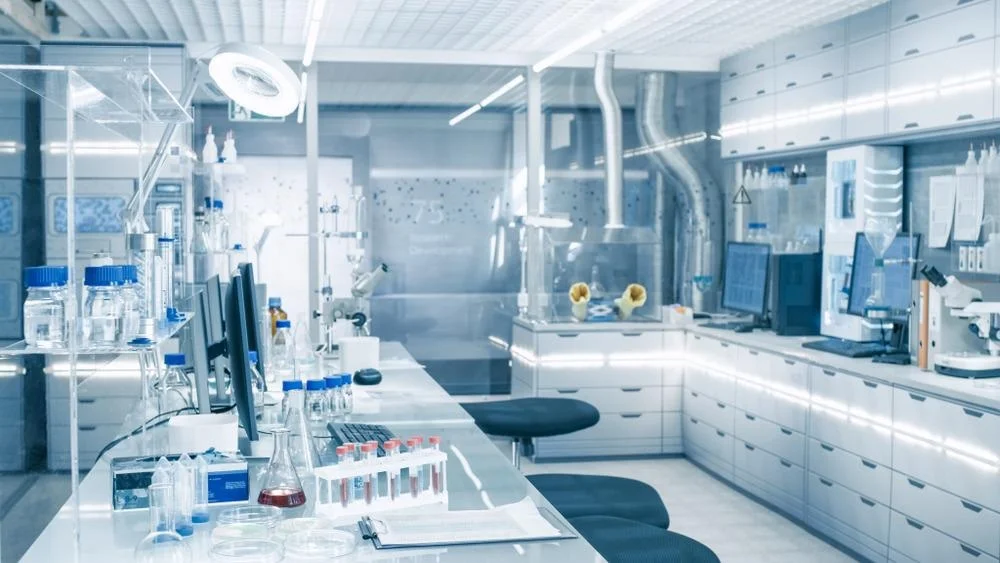Leather Organic Tanning Agent Testing
The testing of leather organic tanning agents is a critical process in ensuring that leather products meet quality standards and regulatory requirements. Leather organic tanning involves the use of various chemicals to convert raw hides into leather, which can be used in a wide range of applications from clothing to furniture.
Organic compounds play a key role in this transformation as they help to preserve the leather, enhance its durability, and improve its appearance. Testing these agents ensures that they are safe for use, effective in their intended purpose, and meet the necessary quality benchmarks. This testing is not only important for ensuring product quality but also for compliance with international standards.
The process of tanning begins by selecting the appropriate organic compounds based on the desired properties of the final leather product. Commonly used agents include aldehydes (such as chromium, formaldehyde), polyols, and amines. Once selected, these materials undergo rigorous testing to ensure they meet specific criteria.
During testing, raw hides are subjected to various treatments with the organic tanning agents. These tests can involve soaking the hides in solutions of different concentrations and under varying conditions of temperature and time. The effectiveness of these agents is then evaluated through a series of chemical analyses and physical assessments.
The first step in this testing process typically involves sample preparation, which includes cutting small pieces from larger hides to ensure uniformity across all samples being tested. After preparing the specimens, they are treated with the organic tanning agents according to predetermined protocols.
Next comes quantitative analysis of the chemical composition of these solutions and the resulting leather. This might include measuring pH levels, determining the concentration of specific compounds, or assessing the presence of any impurities that could affect the final product's quality. Additionally, physical properties such as tensile strength, water resistance, and flexibility are also evaluated post-tanning.
Another crucial aspect of leather organic tanning agent testing is ensuring safety standards are met. Regulatory bodies like Oeko-Tex and International Leather Working Women’s Association (ILWA) set guidelines to prevent harmful substances from entering the market. Compliance with these regulations ensures consumer protection against potential health hazards associated with certain chemicals used in leather production.
Testing laboratories employ advanced analytical techniques such as High Performance Liquid Chromatography (HPLC), Fourier Transform Infrared Spectroscopy (FTIR), and Gas Chromatography-Mass Spectrometry (GC-MS) to provide accurate results. These methods allow for precise quantification of organic compounds within leather products, helping manufacturers make informed decisions about ingredient selection and processing conditions.
Understanding the behavior of these agents during tanning also helps researchers develop new formulations aimed at improving sustainability practices in leather manufacturing. By optimizing processes through thorough testing, industries can reduce waste generation while enhancing overall product performance.
- Sample Preparation: Careful selection and preparation ensure consistent results across all samples tested.
- Chemical Analysis: Advanced analytical tools provide detailed insights into the chemical makeup of treated leather.
- Physical Properties Evaluation: Assessing strength, water resistance, and flexibility helps determine final product quality.
Applied Standards
The testing of leather organic tanning agents adheres to several international standards aimed at ensuring safety and efficacy. One such standard is ISO/IEC Guide 17025, which sets out requirements for the competence of calibration and testing laboratories.
For specific analytical methods used in this field, reference can be made to ASTM D4739-18, which provides guidelines for measuring chromium content in leather and its components. Similarly, EN 342:2006 specifies procedures for determining formaldehyde emission from certain types of footwear and leather goods.
ILWA also publishes recommendations related to the use of environmentally friendly tanning agents, encouraging practices that minimize environmental impact without compromising product quality or consumer safety.
The combination of these standards ensures that all testing conducted aligns with recognized best practices within the industry. Compliance helps manufacturers demonstrate adherence to global norms and build trust among consumers regarding the integrity of their products.
Customer Impact and Satisfaction
The results of leather organic tanning agent testing have a direct impact on customer satisfaction by ensuring high-quality, reliable products. Consumers expect their purchases to last longer and perform better over time, especially when it comes to items like shoes or furniture.
When manufacturers invest in thorough testing, they can confidently offer products that meet both functional and aesthetic expectations. This enhances brand reputation and fosters customer loyalty through consistent delivery of superior goods.
A satisfied customer base translates into increased sales and reduced returns due to dissatisfaction with product performance or appearance. Furthermore, compliance with international standards adds another layer of assurance for buyers who prioritize ethical production methods and environmental responsibility.
International Acceptance and Recognition
Leather organic tanning agent testing is widely recognized internationally as an essential step in ensuring the quality and safety of leather products. Laboratories adhering to global standards gain credibility among manufacturers, suppliers, and consumers alike.
Countries like Germany, USA, UK, and Australia have stringent regulations governing the use of chemicals in leather processing. Meeting these requirements demonstrates a commitment to maintaining high standards throughout the supply chain.
Recognition from respected organizations such as ILWA further reinforces the importance placed on this type of testing. Their endorsement helps promote transparency and trust between stakeholders involved in leather manufacturing processes worldwide.





